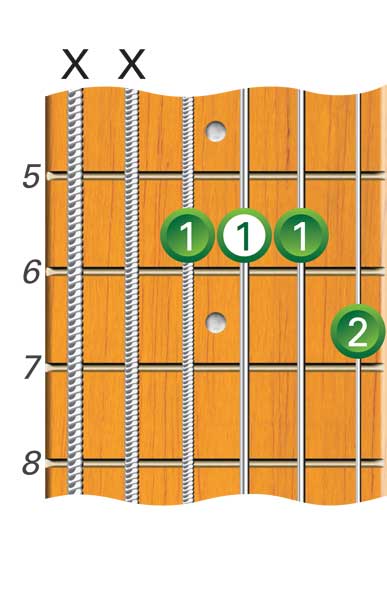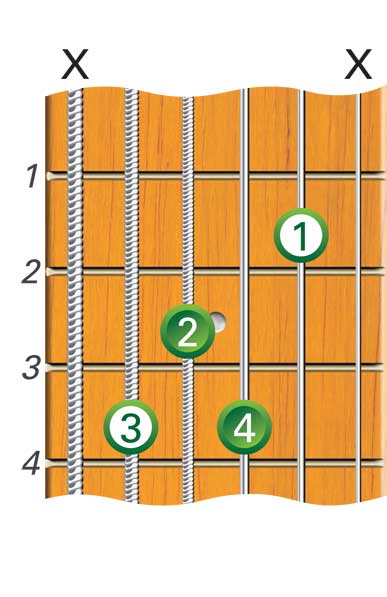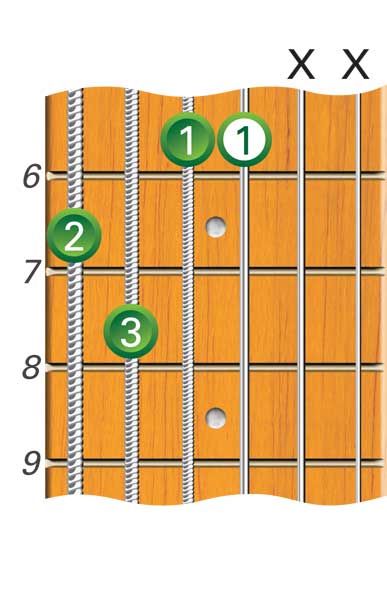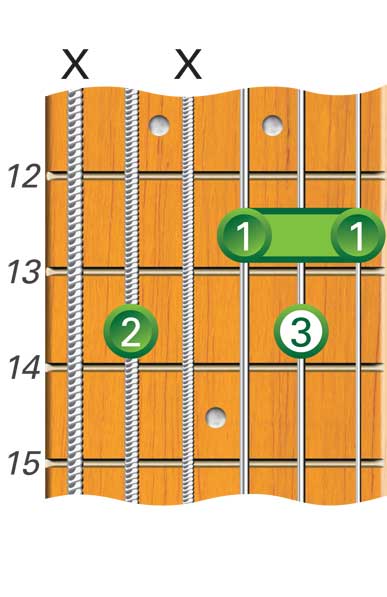
Movable Chords
Here are some movable fingerings for dominant 7th chords, shown here as Db7. These fingerings are all on groups of four adjacent strings - top four, middle four and bottom four. Once you are comfortable with each shape, transpose it to all keys.
Db7

Db7

Db7

Db7

Db7

Db7

Db7

Db7

Db7

Db7

Db7

Db7

Db7

Db7

Db7

Db7

Here are some movable dominant 7th chord shapes which are not on four adjacent strings. They all relate back to the five basic forms. Don’t forget to transpose them to all keys.
Db7

Db7

Db7

Db7

Db7

Db7

Db7

Db7

Db7

Db7

Db7

Db7

Db7

Db7

Db7

Db7

Play the following example using only open chord shapes, then try it with movable shapes as well.


Dominant 7th Chords and the Blues
The 12 Bar Blues is an excellent progression to use for practicing dominant 7th chords, since blues songs use them as the basis for any accompaniment.
The following Blues is played with only one chord shape (shown in the following chord diagram) which is moved up and down the fretboard to play the three chords in the progression. Try the same thing with other shapes.



In this progression, all three chords are played at the 3rd fret. Try playing it in other positions using chord shapes which are close together on the fretboard.


Minor Seventh


A minor 7th chord is created by adding a flattened 7th degree to any minor chord. For example, a Cm7 chord contains the notes C, Eb, G and Bb (1, b3, 5 and b7). The following diagrams show some common open minor 7th chord shapes.